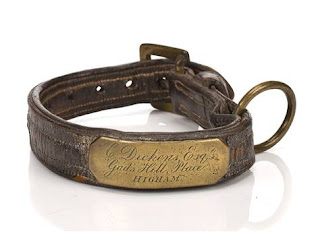As we have seen, the British, both royal and non, love their dogs, so it should be no wonder that they turned their minds to the benefit of canines at large. The Society for the Prevention of Cruelty to Animals was formed in a coffee shop in 1824 by a group of men that included the anti-slavery activist William Wilberforce. It was the first animal welfare charity to be founded in the world and sought to prevent the abuse of working animals, entertainments (cock-fighting), and slaughterhouse conditions. In its first year, the Society brought sixty three offenders before the Courts. It was granted its royal status by Queen Victoria in 1840 to become the Royal Society for the Prevention of Cruelty to Animals.
One of the RSPCA’s members, Mary Tealby, went on to found the world’s first successful animal sanctuary, the Battersea Dogs and Cats Home, which celebrates its 150th anniversary this year (find special issue stamps here). The institution both responded to and influenced the British public’s attitude towards animal welfare during its early years. Mary Tealby, who had separated from her husband and moved to London in 1860, first resolved to found a “canine asylum” after the death of a starving dog she had attempted to nurse back to health. Struck by the plight of London’s strays, she established the Temporary Home for Lost and Starving Dogs in a stable in an Islington mews.

The Times launched a scathing attack on the Home on 18 October 1860 – “From the sublime to the ridiculous – from the reasonable inspirations of humanity to the fantastic exhibitions of ridiculous sentimentalism – there is but a single step… When we hear of a ‘Home for Dogs’, we venture to doubt if the originators and supporters of such an institution have not taken leave of their sober senses.”
However, other Victorians were ready to support the cause, including Charles Dickens. He published a piece in the magazine All the Year Round in 1862 about the home, calling it an “extraordinary monument of the remarkable affection with which the English people regard the race of dogs.” His sentimental prose gave the home a much-needed seal of approval: “It is the kind of institution which a very sensitive person who has suffered acutely from witnessing the misery of a starving animal would wish for, without imagining for a moment that it would ever seriously exist. It does seriously exist, though.”
Dickens was not alone in supporting the cause and the Society and Home flourished and expanded despite society’s jeers. The following reports were listed in a publication called The Animals Friend in 1897:
The Committee of the Battersea Dogs’ Home have purchased the freehold of a large and picturesque piece of ground at Hackbridge, in Surrey, to be used as a sanatorium for the better dogs passing through their hands. When funds permit it is intended to erect kennels, and establish the dogs under thoroughly comfortable and healthy conditions. It will be a real home for them, where they will have the best of treatment and plenty of daily exercise. This is a step in the right direction, and we trust it will meet with the support it deserves. Our readers will be glad to learn that the deed of conveyance contains a clause binding the managers of the Home never; at any time, to sell dogs for vivisection or any experimental purpose whatever.
On January 22nd, 1896, Mrs. Williams opened the London Home for Lost and Starving Cats at 80, Park Road, Hampstead, and in the first year received, sheltered, and humanely disposed of 2,450 wretched, homeless cats ; some were sent to good homes, but 80 per cent, went to their last and long sleep in the Battersea lethel chamber. The number has reached now the large figure of 3,923, making an average of from 90 to 106 homeless cats received weekly. Mrs. Williams has pursued her work in the face of all sorts of sneers and laughs, but is deeply grateful for the progress of her rescue work in such a short time. The Home is under the patronage of their Graces the Duke of Portland and the Duchesses of Bedford, Wellington, Sutherland, and others, but the funds are very low, as the expenses average £8 weekly, and help is earnestly solicited. Inspection of the Home is invited. The report is sent free.
For the 100th anniversary of the RSPCA, Thomas Hardy wrote an ode entitled Compassion: “Cries still are heard in secret nooks/ Till hushed with gag or slit or thud… But here, in battlings, patient, slow/ Much has been won – more, maybe than we know.” In 1885, Queen Victoria became Patron of the Home, and it has remained under Royal Patronage ever since. Currently, Queen Elizabeth is the Patron and Prince Michael of Kent serves as President.
By the end of the 19th century, animal charities were no longer the subject of ridicule and additional institutions had joined their ranks. The Kennel Club was founded in 1873, and Frances Power Cobbe set up the Society for the Protection of Animals Liable to Vivisection in 1875. The National Canine Defence League was founded in 1891, while 1903 saw a Swedish countess, Emily Augusta Louise Lind-af-Hageby, establish the Animal Defence and Anti-Vivisection Society in London.


